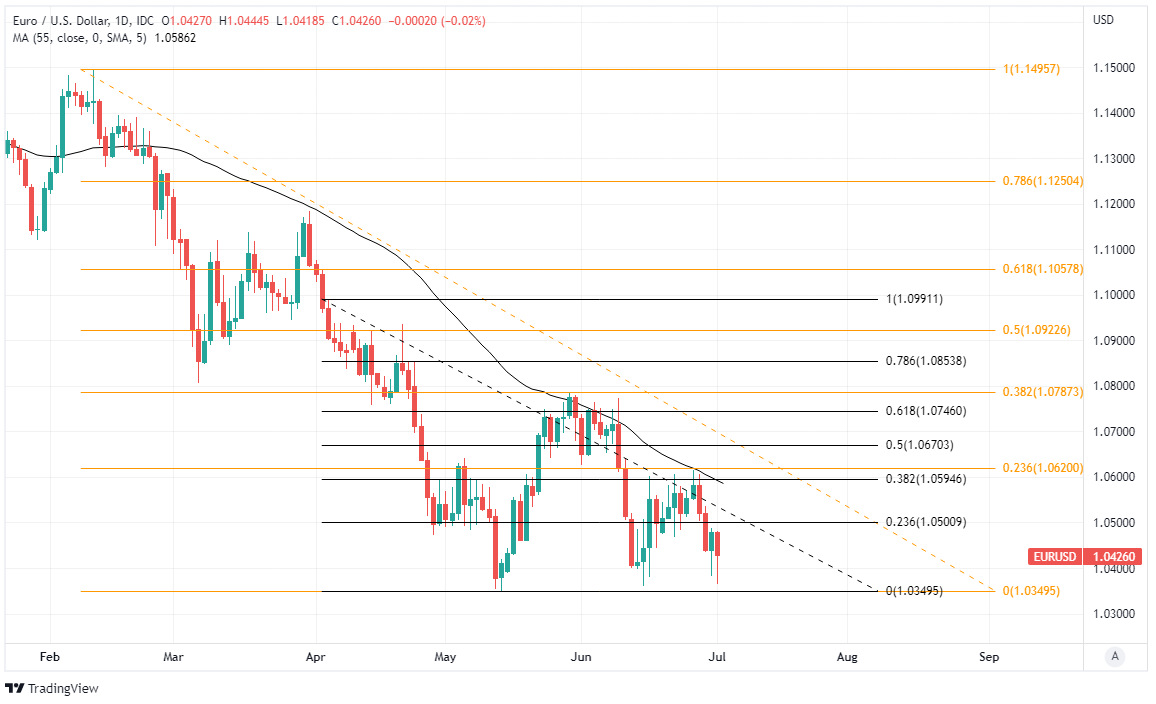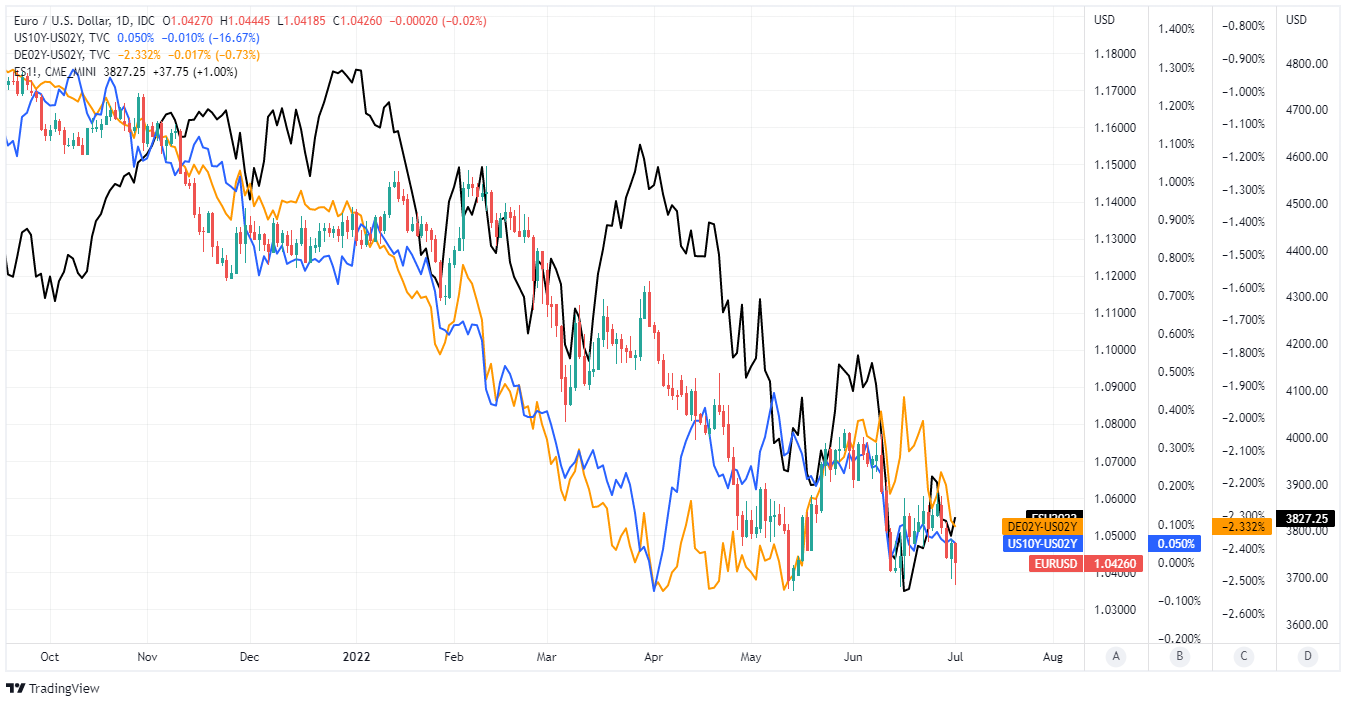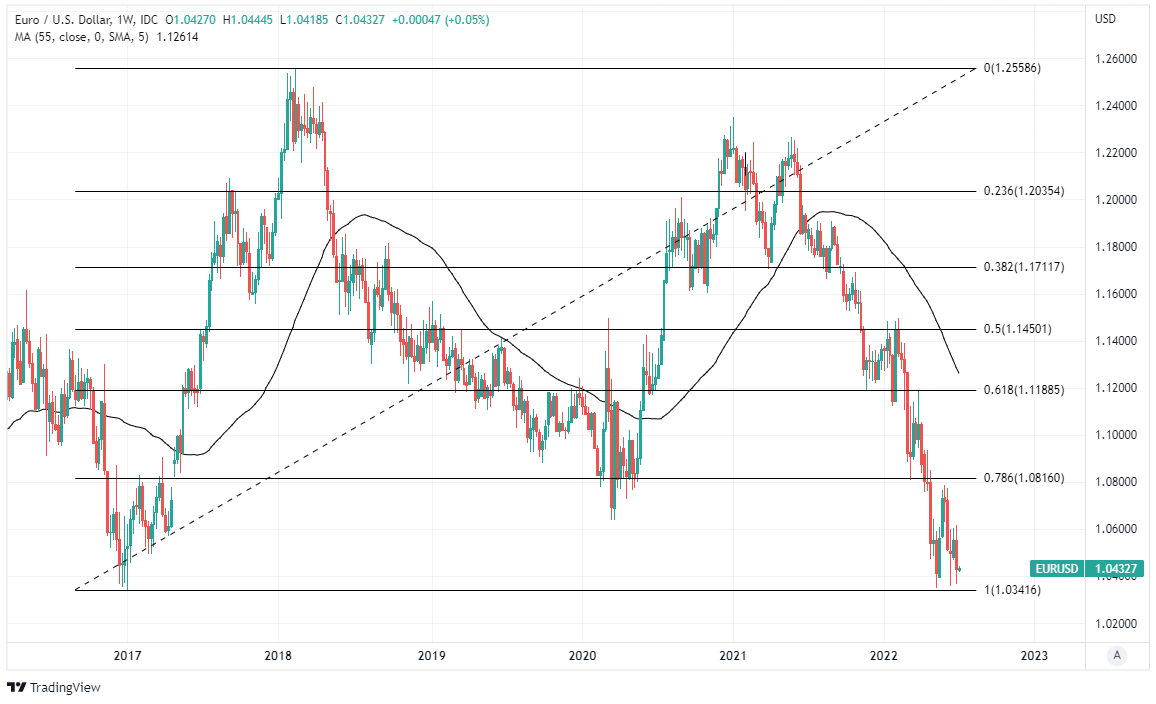EUR/USD Week Ahead Forecast: Looking for a Footing as Dollar Dominates
- Written by: James Skinner
-
- EUR/USD vulnerable near 2017 lows
- But could stage rebound if USD eases
- ECB & EU retail sales in focus for EUR
- Fed policy & U.S. job data also in focus

© Commerzbank HQ looms over the Frankfurt skyline. Image © Andre Douque, reproduced under CC licensing conditions
The Euro to Dollar exchange rate crumpled back near to recent five-year lows last week and might risk remaining under pressure near to those levels in the days ahead unless the U.S. currency falters further in the wake of its Friday stumble.
Europe’s single currency came under pressure from a stronger Dollar early on last week and came close to five-year lows for a second time in the week on Friday after Eurostat data showed the overall and core rates of European inflation diverging.
Erratic Dollar strength has been an important driver of the Euro's losses and hence the sharp recovery late in Friday’s session when the U.S. currency sustained a setback following June’s Institute for Supply Management Manufacturing PMI.
“We saw a decent amount of downside buying again in the euro yesterday," writes an unnamed trader in Friday’s J.P. Morgan London FX Desk Daily.
“Clearly some significant support in spot towards the year’s lows of 1.0350 continues to contain and breaking that level is key for an extension lower,” the trader also wrote.
 Above: Euro to Dollar rate shown at daily intervals with 55-day moving-average and Fibonacci retracements of early April and February declines indicating possible areas of short-term technical resistance for the Euro. Click image for closer inspection.
Above: Euro to Dollar rate shown at daily intervals with 55-day moving-average and Fibonacci retracements of early April and February declines indicating possible areas of short-term technical resistance for the Euro. Click image for closer inspection.
Friday’s downside surprise in the ISM PMI was viewed by many economists as an indication of a U.S. economic slowdown under way, which is recently popular notion but one that did little to help the greenback on Friday, which retreated from many currencies ahead of the weekend close.
“There have been a few cross currents this week, most obviously a stronger USD through quarter end. However, another is probably lingering concerns about energy supplies,” says Paul Robson, head of G10 FX strategy for Europe at Natwest Markets.
“So, the theme remains one of general weakness of European currencies. We continue to watch shifts in the US (2/10y) curve as it has been positively correlated with EUR/USD over many years. It suggests support at current levels,” Robson and colleagues wrote in a Friday research briefing.
The Dollar did not benefit much last week from either the ISM manufacturing survey or the Federal Reserve’s (Fed) preferred measure of inflation - Core PCE Price Index - which stalled for the month of June and in the process pulled the annual rate down from 4.9% to 4.7% along the way.
Both were followed by broad losses for the Dollar, although it was also quick to draw dip buyers from the market during weakness and much now likely depends for EUR/USD this week on the market’s response to important events in the U.S. calenda and on anything emerging on the European Central Bank (ECB) policy front.
Above: Euro to Dollar rate shown at daily intervals with spread or gap between 10 and 02-year U.S. government bond yields and gap between 02-year German and U.S. bond yields. Also features S&P 500 index futures. Click image for closer inspection.
The Euro got no help last week when ECB President Lagarde emphasised the importance of optionality in relation to the timing and size of any changes in interest rates following the 0.25% July uplift that was effectively already pre-announced last month.
“Given the prevailing uncertainty, normalisation should remain gradual. For now, our aim should be to avoid high near-term imported inflation becoming entrenched by feeding into higher inflation expectations. And this is why we are ending the policies that sought to fend off deflationary dynamics, such as net asset purchases and negative rates,” said Fabio Pannetta, a member of the ECB's Executive Board, on Friday.
“Further adjustments to our monetary policy stance will depend on the evolution of the outlook for inflation and the economy. At this stage, inflation expectations stand at around 2% and wage increases remain moderate. We are closely monitoring these developments. And we need to see how the economy reacts to the tightening in financing conditions and the deterioration of the global and domestic economic outlook,” he added.
With fears for the global economy leading markets to recently second guess their earlier assumptions about interest rates, the Euro is likely to pay close attention this week when Deutsche Bundesbank President Joachim Nagel and ECB President Lagarde appear publicly on Monday and Friday respectively.
Above: Euro to Dollar rate at weekly intervals with 55-week moving-average and Fibonacci retracements of 2017 recovery indicating possible area of technical support for the Euro. Click image for closer inspection.
However, along the way minutes from the ECB’s June meeting are out on Thursday while a number of Fed policymakers are scheduled to speak publicly from Wednesday on, which is also when minutes from the Fed’s June meeting are set to be released.
“With the FX market focus having shifted from worries about inflation to concerns about a recession in the US, the Fed rate hike expectations have seemingly peaked in the wake of the June meeting,” says Valentin Marinov, head of FX strategy at Credit Agricole CIB.
“To the extent that the markets perceived the US data this week as confirming that the Fed has reached peak hawkishness in June, FX investors could start taking profit on their stretched USD longs,” Marinov and colleagues said on Friday.
June’s meeting saw most Fed rate setters minded to lift interest rates to a “modestly restrictive” range of between 3% and 3.5% by year-end and to four percent or more next year in order to bring down inflation, although markets have recently wagered that these levels are unlikely to be seen.
The Fed’s outlook is based on the assumption that the U.S. labour market will remain strong even as the bank carries out its fastest and most potent monetary tightening for decades, which is why June non-farm payrolls report is also likely to be scrutinised extra closely by the market on Friday.
“Price action over the past week could spell some trouble for the EUR (rising wedge-like pattern) unless spot can move on to new, short-term cycle highs quickly,” warns Juan Manuel Herrera, a strategist at Scotiabank.












